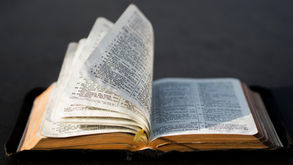'Abdu'l-Bahá in New York City
- Uplifting Words
- Feb 19, 2020
- 2 min read
'Abdu'l-Bahá was the eldest Son of Bahá'u'lláh, the Prophet Founder of the Bahá'í Faith. His claimed station was the "Servant of Bahá," a Servant of His Father's Cause, a divine revelation from God which initiated a new age in the evolution of humankind.

Bahá'u'lláh designated 'Abdu'l-Bahá "The Center of His Covenant" and called Him "The Master," a title which was also respectfully used by the followers of the Faith in the United States when referring to 'Abdu'l-Bahá.
Bahá'u'lláh and His family were dispossessed of their ancestral properties and exiled from Persia in 1853, when 'Abdu'l-Bahá was a child nine years old. They remained prisoners of the Ottoman Empire in Akka (Akko or Acre, in today Israel) until the Young Turks' Rebellion of 1908 freed 'Abdu'l-Bahá and His family from prison.
After a period of rest, 'Abdu'l-Bahá decided to travel to the West to spread the message of Bahá'u'lláh. The Western Bahá'ís had been pleading with the Master to visit America.
An American Bahá'í, visiting 'Abdu'l-Bahá in Palestine wrote excitedly to a friend in August 29, 1910: "I have a very big piece of news to tell you. 'Abdu'l-Bahá has left this Holy Spot for the first time in forty-two years and has gone to Egypt." The day of His departure He had visited the pilgrims (other visitors) as usual; they did not suspect that it was a good-bye visit.
In 1911, 'Abdu'l-Bahá made His first historic trip to Europe, then He returned to Egypt, in Ramleh, a suburb of Alexandria, until the spring of 1912. On March 25, the Master and His retinue boarded the S.S. Cedric in Alexandria, heading for the United States. The American Bahá'ís had sent thousands of dollars for His journey, urging Him to leave the Cedric in Italy and travel to England to sail on the maiden voyage of the Titanic. But the Master returned the money for charity and continued His voyage on the Cedric.

'Abdu'l-Bahá's entourage was an unusual mixture of Easterners and Westerners. The Master usually wore a long robe, white or light tan, a dark aba (overcoat) and a white turbaned headdress on His flowing, silky white hair. The Persians in His entourage wore Western clothing and the red fez. At Naples, a few Americans and an English believer, Miss Louisa Mathew, joined the traveling party for the rest of the trip.
At the table, "the intermingling and assembling together of the Easterners and the Westerners attracted the eyes," wrote Mahmud. It also caused misunderstanding and distrust due to the war between Turkey and Italy at the time. However, during the voyage, the officers of the ship asked 'Abdu'l-Bahá to address a public meeting which they arranged in the lounge. Among the large number of people attending were the consuls of Russia and Italy, who conversed regularly with the Master afterwards.
Twenty five years later, a woman who as a child had traveled on the Cedric told a Bahá'í that she had never forgotten her personal encounter with the Master. "A glance that burned" into her soul and frightened her, lest she had displeased Him, and the kindly smile which released her "from terror." She recalled that everyone had remarked about "His majestic bearing, His kingly walk, and above all the strange white light that followed Him everywhere."















